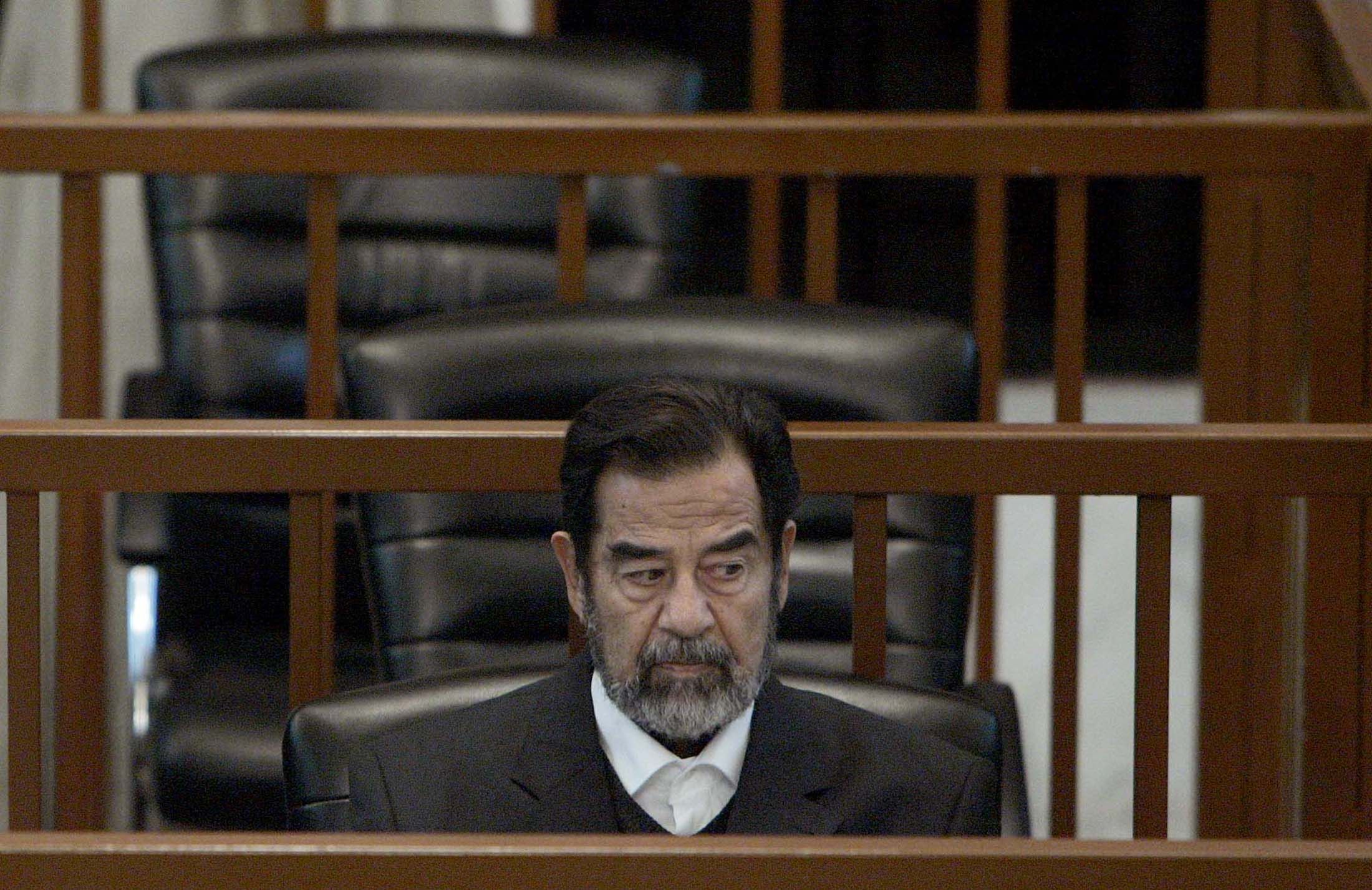
Eighty-three-year-old Steve McNamara appeared perfectly at ease. He ambled along with an unhurried gait, as if he were strolling out for a drink with a classmate from Princeton's class of 1955. Despite his reassuring calm, the sight of hundreds of San Quentin inmates around us in the prison's sun-splashed Lower Yard, some heavily tattooed, muscle-bound, and furiously knocking out push-ups, was a bit unsettling to me, despite my combat tour in Iraq.
Steve, a former newspaper publisher, is a San Quentin regular. He has chosen not to pass his retirement in leisure, instead he spends a few days a week with a unique sort of "men's club," as he calls it—the men who produce the San Quentin News, the nation's only independent prison newspaper.
Steve had invited me to speak to San Quentin's journalism guild about my book The Prisoner in His Palace: Saddam Hussein, His American Guards, and What History Leaves Unsaid, which documents the improbable relationships some American soldiers developed with Saddam Hussein while assigned to care for him in the months leading up to his execution. The journalism guild is one of more than 65 programs at San Quentin, run by an enormous network of Bay Area volunteers, with an eye toward rehabilitation and laying the groundwork for a successful re-integration into society.
Following a 20-minute delay, during which prisoners in the Yard had to sit down and freeze in place due to a disturbance, I took my seat in the front of the assembled inmates. Laminated yellowing front pages of the San Quentin News covered the walls. It was a passable approximation of a small paper's newsroom—only those populating this one were all wearing jumpsuits labeled "CDCR Prisoner."
I began with some background on myself, and my book. Some of the prisoners had read it, and I had no idea what kinds of questions to expect.
I was certainly not prepared for what happened next.
Hands shot up when I opened the floor up to questions. The inmates wasted no time zeroing in on fundamental questions the book raises about human nature. One referenced an epigraph I included from Bret Easton Ellis's American Psycho: "Is evil something you are, or something you do?" He then volunteered that the prosecutor in his murder case had made him out to be a monster, but that he wasn't, though "maybe if you saw my crime scene photos you would think so." Listening to his matter-of-fact observation, I tried to remain poised, and disguise the fact that I couldn't help but imagine what sort of ghoulish act had landed him there. I was reminded of an observation that when Saddam looked in the mirror, he probably did not see a figure of pure, undiluted evil, as he was often portrayed. But his victims surely did.
It was obvious the inmates had spent time reflecting on the book. The story of the relationships the American guards developed with their captive, and the cognitive dissonance triggered by their discovery that the raging killer they had expected to encounter was actually considerably more complex, resonated with them.
A number of the prisoners expressed an interest in Saddam's violent childhood. He had been raised by a single mother and forced to fend for himself as a "son of the alleys," and some likely saw similarities with their own upbringings. They were wrestling with the age-old question of the role of nature vs. nurture in determining our behavior.
Some inmates had embraced Islam in prison and were curious as to whether Saddam's overt religiosity while on trial was real or contrived. Others commented on the difficulty some of the soldiers had re-acclimating to American society and how it mirrored the challenges prisoners can have going home following their release.
The inmates seemed earnest and sincere, which in today's age of ironic detachment was like a gust of fresh air coming in from the adjacent San Francisco Bay. A young Latino man told me my writing reminded him of Dostoevsky, one of his favorite authors. An older black man from my hometown of Washington, D.C., cleverly wove a quote from Socrates into a question. Another inmate speculated that the intimacy of the guards' interactions with Saddam led them to distinguish between Saddam the human and the crimes for which he was guilty. "It's easier to execute someone if you have first vilified him," he observed, reflecting on the difficulty some of the soldiers had delivering Saddam to the gallows.
When it was time for me to leave, the inmates shook my hand and seemed genuinely grateful for the visit. The feeling was mutual. Who would have thought that the most stimulating discussion I would have on this book tour wouldn't take place in a think tank or Politics and Prose, but rather inside these walls, ringed with razor wire and topped with guard towers?
As the last iron door slammed loudly behind me I re-emerged into an unseasonably hot Bay Area afternoon. It would be years before many in my audience would be able to do the same. I caught a ferry downtown. It was disorienting to suddenly be surrounded by people snapping pictures of the Golden Gate Bridge and Alcatraz, consumed by the moment, awash in an unrelenting flood of real and digital stimulation. Severed by an austere existence from this churn of activity that can short-circuit meaningful reflection, some inmates reflect for years on crimes that took seconds to commit. It is important not to romanticize what can be a miserable existence, nor to diminish the consequences of these crimes. Still, my mind kept circling back to the prisoners I had just met and the depth of our conversation.
Some critics of my book had speculated that Saddam had manipulated his guards and that the relationships had not been genuine. I wondered if perhaps I, too, had been charmed by clever prisoners. Was it an elaborate act, designed to hoodwink an impressionable visitor into believing they were something they were not?
I didn't want to think so, and the more I thought about it, the more I felt convinced that what I had witnessed was real, and that these volunteer programs really are injecting some light into what could otherwise be a very dark place, to the ultimate benefit of both the prisoners, and the society most would eventually re-enter.

Will Bardenwerper is the author of the recently published The Prisoner in His Palace: Saddam Hussein, His American Guards, and What History Leaves Unsaid.
Uncommon Knowledge
Newsweek is committed to challenging conventional wisdom and finding connections in the search for common ground.
Newsweek is committed to challenging conventional wisdom and finding connections in the search for common ground.





